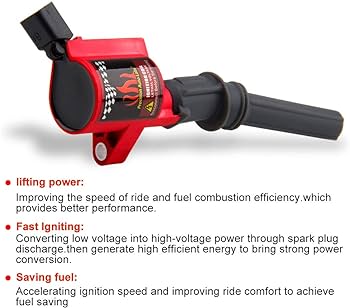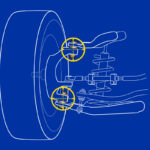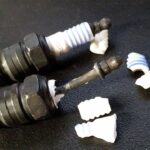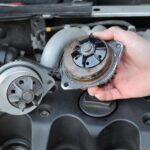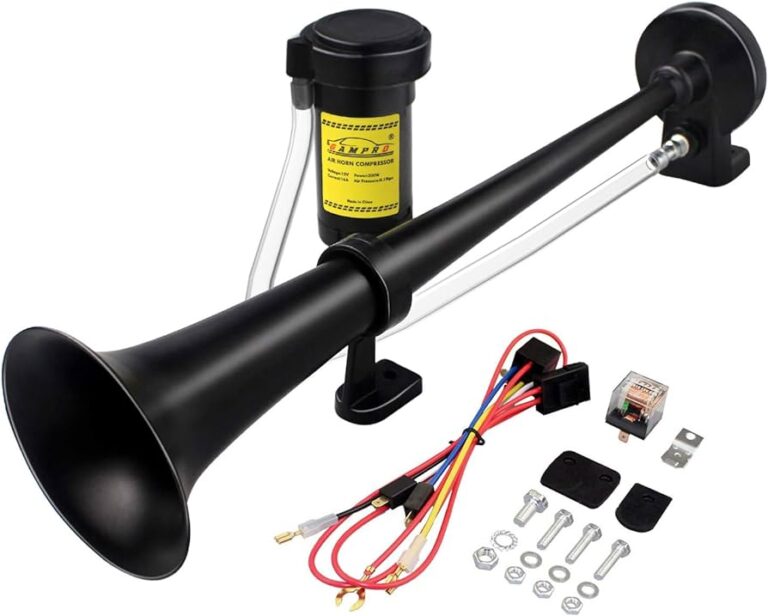Why Does My F150 Hesitation When I Accelerate? Uncover the Power of Engine Optimization
The most common reasons for hesitation when accelerating in an F150 are dirty fuel injectors and poor ignition. Dirty fuel injectors lead to a loss of power and engine misfires, while issues with spark plugs or ignition coils can also cause hesitation.
Thoroughly cleaning the throttle body and ensuring that the throttle position and mass airflow sensors are clean and functioning properly can improve acceleration. Additionally, running some fuel injector cleaner through the gas and checking the fuel pressure can help address the issue.
It is also possible that a lean fuel mixture is causing hesitation, which may require further diagnosis and adjustment.
Common Causes Of Hesitation During Acceleration
One common cause of hesitation during acceleration in a F150 is dirty fuel injectors, leading to a loss of power when trying to accelerate or maintain a consistent speed. Other potential causes include issues with the fuel system or poor ignition components like spark plugs or ignition coils.
Throttle body cleaning and sensor maintenance can help improve acceleration responsiveness.
When it comes to experiencing hesitation during acceleration in your F150, there are a few common causes that you should be aware of. These issues can lead to a jerky accelerator, making it difficult to maintain a smooth driving experience. In this blog post, we will explore three common causes of hesitation during acceleration, including dirty fuel injectors, issues with the fuel system, and poor ignition. Let’s dive in!
Dirty Fuel Injectors
Dirty fuel injectors are among the most common reasons why an accelerator becomes jerky. The dirty injector leads to your car losing power when you attempt to accelerate while at a stop and when you try to drive at a consistent speed. This is the result of an engine misfire.
To address this issue, it is important to clean the fuel injectors regularly. By doing so, you can remove any dirt or debris that may be obstructing the proper fuel flow. There are various fuel injector cleaners available in the market, which you can add to your gas tank to effectively clean the injectors and improve the acceleration performance of your F150.
Issues With The Fuel System
The most common cause of engine sputtering are issues with the fuel system. These can range from bad fuel filters, fuel pump issues, or fuel injector issues. If your fuel filters are clogged or your fuel pump is malfunctioning, it can restrict the proper flow of fuel to the engine, resulting in hesitation during acceleration.
To prevent this problem, it is essential to maintain your fuel system by regularly replacing the fuel filters and ensuring the fuel pump is in good working condition. By keeping the fuel system clean and functional, you can ensure a smooth and consistent acceleration experience.
Poor Ignition
Poor ignition can also contribute to hesitation during acceleration. When the ignition system is compromised, it can lead to a lack of spark in the combustion process, resulting in a delay in power delivery to the engine.
To address this issue, it is crucial to regularly check and maintain your ignition system. This includes inspecting and replacing spark plugs as needed, as well as checking the ignition coils for any signs of damage or malfunction. By maintaining a healthy ignition system, you can ensure smooth and responsive acceleration.
In conclusion, hesitation during acceleration in your F150 can be caused by dirty fuel injectors, issues with the fuel system, and poor ignition. By addressing these common causes, you can improve the overall performance and driving experience of your vehicle. Regular maintenance and cleaning of these components will help keep your F150 running smoothly and minimize any hesitation during acceleration.

Credit: www.ebay.com
Potential Solutions For Hesitation During Acceleration
Dealing with hesitation during acceleration in your F150 can be frustrating and impact the overall performance of your vehicle. Fortunately, there are several potential solutions to address this issue. By following these steps, you can help improve your F150’s acceleration and ensure a smoother driving experience.
Throttle Maintenance
One of the common causes of hesitation during acceleration is a dirty throttle body. Over time, debris and carbon buildup can accumulate on the throttle body, obstructing airflow and affecting its functionality. To resolve this issue, you can perform throttle maintenance by following these steps:
- Use a throttle body cleaner specifically designed for your vehicle’s make and model.
- Locate the throttle body, which is typically located between the air intake and the intake manifold.
- Remove the air duct and carefully spray the throttle cleaner onto the throttle plates and inside the throttle body.
- Use a clean cloth or brush to gently scrub away any residue.
- Reconnect the air duct and start the engine to ensure proper functionality.
Sensor Check
Another potential cause of acceleration hesitation is a malfunctioning throttle position sensor (TPS) or mass airflow sensor (MAF). These sensors play a crucial role in determining the amount of air and fuel mixture for combustion. If they are dirty or not functioning properly, it can lead to hesitation during acceleration. To check these sensors, you can follow these steps:
- Refer to your vehicle’s manual to locate the TPS and MAF sensors.
- Inspect the sensors for any signs of dirt, debris, or damage.
- If there is visible dirt or debris, use a sensor-safe cleaner to gently clean the sensors.
- Once cleaned, reassemble the sensors and ensure they are securely connected.
Fuel System Cleaning
The fuel system can also contribute to acceleration hesitation. Dirty fuel injectors, clogged fuel filters, or a faulty fuel pump can disrupt the fuel flow and affect engine performance. To address fuel system issues, consider the following steps:
- Add a fuel system cleaner to your vehicle’s gas tank.
- Allow the cleaner to mix with the fuel and run through the system.
- Drive your F150 for a prolonged period to maximize the cleaning process.
- Repeat this process regularly to prevent future fuel system problems.
By performing these potential solutions, you can effectively address hesitation during acceleration in your F150, ensuring a smoother and more responsive driving experience. However, if the issue persists, it is recommended to consult with a professional mechanic for further diagnosis and assistance.
Effects Of Lean Fuel Mixture On Acceleration
Lean Fuel Condition on Closed Loop OperationAn engine that hesitantly accelerates is most likely dealing with a fuel mixture which is too lean for combustion. Engines that are running with a lean fuel mixture experience a decrease in power and efficiency, resulting in hesitation when you step on the accelerator. This can be caused by various factors, such as a faulty oxygen sensor, clogged fuel injectors, or a vacuum leak.
Running InefficientlyWhen the fuel mixture is too lean, the engine runs less efficiently, which can have a significant impact on acceleration. A lean fuel mixture means that there is not enough fuel relative to the amount of air entering the combustion chamber. This can result in incomplete combustion and a decrease in engine power, causing hesitation during acceleration.
There are several potential reasons for running inefficiently:
- Fuel injectors may be dirty or clogged, preventing the proper amount of fuel from being delivered to the engine.
- The oxygen sensor, which measures the oxygen content in the exhaust gases, may be malfunctioning and providing incorrect feedback to the engine control unit.
- A vacuum leak can allow unmetered air to enter the engine, affecting the air-fuel mixture and causing lean conditions.
To ensure optimal acceleration and performance, it’s essential to address these issues and restore the proper fuel mixture.
Here are a few steps you can take to rectify a lean fuel condition and improve acceleration:
- Clean or replace fuel injectors: Dirty or clogged fuel injectors can disrupt the fuel spray pattern, resulting in a lean fuel mixture. Cleaning or replacing the injectors can restore proper fuel delivery and improve acceleration.
- Check and replace oxygen sensor: A faulty oxygen sensor can provide inaccurate readings, leading to a lean fuel mixture. Regularly checking and replacing the sensor can help maintain the correct air-fuel ratio and optimize acceleration.
- Inspect for vacuum leaks: A vacuum leak can introduce excess air into the combustion chamber, causing a lean fuel condition. Thoroughly inspecting and repairing any vacuum leaks can help improve acceleration and overall engine performance.
By addressing these factors and ensuring a proper fuel mixture, you can eliminate hesitation during acceleration and enjoy a smoother driving experience in your F150. Remember to consult a professional mechanic if you’re unsure about any maintenance or repairs.
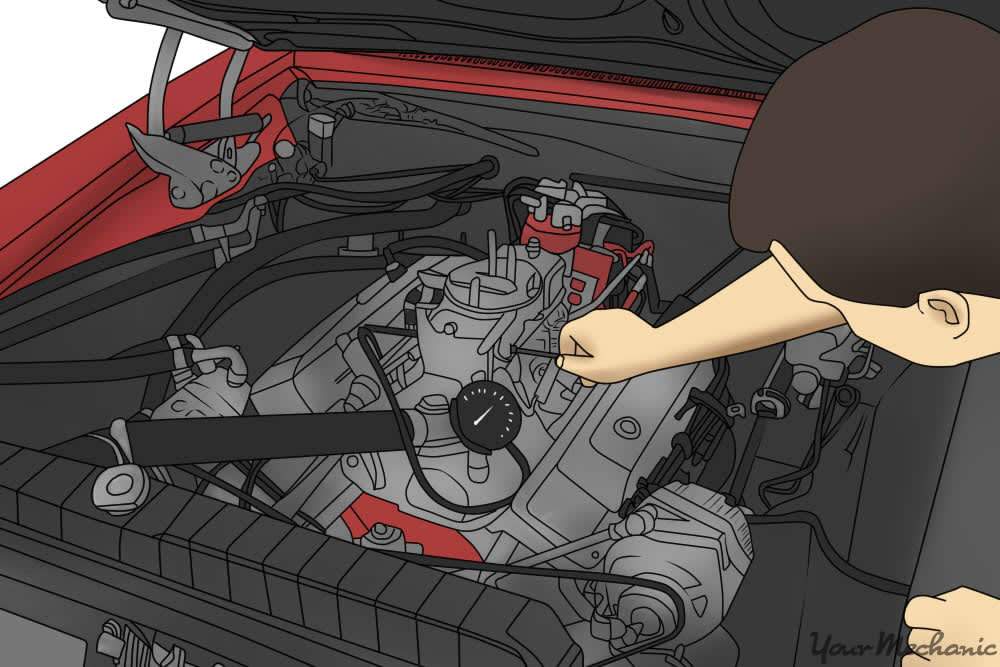
Credit: www.yourmechanic.com
Diagnostic Steps To Identify The Problem
When experiencing hesitation in your F150 during acceleration, there are several diagnostic steps to identify the problem. These include checking for dirty fuel injectors, inspecting the throttle body for debris, and ensuring that the throttle position and mass airflow sensors are clean and functioning properly.
If your F150 is hesitating when you accelerate, it could be due to various issues with the engine. To pinpoint the problem and resolve it effectively, you can follow these diagnostic steps:
Mass Air Flow Sensor
The mass air flow (MAF) sensor plays a crucial role in the engine’s performance. It measures the amount of air entering the engine and provides this information to the engine control module (ECM). If the MAF sensor is dirty or faulty, it can cause hesitation during acceleration.
To diagnose the MAF sensor, you can follow these steps:
- Locate the MAF sensor, which is usually positioned between the air filter and the throttle body.
- Inspect the sensor for any dirt, debris, or oil contamination. Clean it using MAF sensor cleaner if necessary.
- Check the sensor’s wiring harness for any signs of damage or loose connections.
- If the issue persists, consider replacing the MAF sensor.
Fuel Pump
The fuel pump is responsible for providing a steady flow of fuel to the engine. If it’s not functioning properly, it can result in a lack of fuel supply and lead to hesitation during acceleration.
Follow these steps to diagnose the fuel pump:
- Check the fuel pressure using a fuel pressure gauge. Ensure it meets the manufacturer’s specifications.
- Inspect the fuel pump relay and fuse for any signs of damage or malfunction. Replace them if necessary.
- Listen for any unusual noises coming from the fuel tank while the engine is running. This can indicate a faulty fuel pump.
- If the fuel pump is suspected to be the issue, consider getting it tested or replaced by a professional mechanic.
Air Filter
The air filter ensures that the engine receives clean air for optimal combustion. A clogged or dirty air filter can restrict airflow, leading to hesitation during acceleration.
To diagnose the air filter, you can follow these steps:
- Locate the air filter housing, usually positioned in the engine bay.
- Remove the air filter and inspect it for any dirt, debris, or damage.
- If the filter appears dirty, replace it with a new one.
- Ensure that the air filter housing is securely closed after replacing the filter.
By following these diagnostic steps for the mass air flow sensor, fuel pump, and air filter, you can identify the potential causes of hesitation when accelerating in your F150. Remember, if you’re unsure about performing these diagnostics yourself, it’s always best to consult with a professional mechanic to ensure accurate diagnosis and appropriate repairs.
Additional Considerations For Improved Acceleration
One possible reason for F150 hesitation when accelerating is dirty fuel injectors, causing an engine misfire and loss of power. Throttle maintenance and ensuring clean throttle position and mass airflow sensors can also improve acceleration.
Tune-up And Engine Optimization
Routine maintenance, like a tune-up, can help improve the acceleration of your F150. Regularly checking and replacing spark plugs, ignition coils, and air filters ensures optimal performance. Dirty fuel injectors can also cause hesitation during acceleration. To address this, consider using a fuel injector cleaner to remove any deposits and improve fuel flow. Additionally, cleaning the throttle body can eliminate debris that may be obstructing its functionality.Sensor Check
To further improve acceleration, ensure that the throttle position sensor and mass airflow sensor are clean and functioning properly. These sensors play a crucial role in determining the air-fuel mixture and throttle response. Any issues or malfunctioning sensors can lead to hesitation and poor performance. Regularly checking and cleaning these sensors can go a long way in ensuring optimal acceleration.Fuel System Optimization
Issues with the fuel system can also contribute to hesitation during acceleration. A clogged fuel filter or a weak fuel pump can restrict fuel flow, resulting in poor acceleration. Regularly replacing the fuel filter and checking the fuel pressure can help address these issues. It’s also worth considering using a fuel additive to clean the fuel injectors and keep the fuel system in good condition.Consider Upgrading Performance Parts
If you’re looking for even better acceleration, consider upgrading certain performance parts of your F150. Upgrading to a high-flow air intake system, a performance exhaust, or installing a throttle response controller can all contribute to improved acceleration. These upgrades can enhance the overall airflow and optimize engine performance, resulting in a more responsive and powerful drive.By implementing these additional considerations, you can address the hesitation issue during acceleration and enjoy improved performance from your F150. Regular maintenance, sensor checks, fuel system optimization, and performance upgrades can all work together to provide a smoother and more enjoyable driving experience.
Credit: www.amazon.com
Conclusion
To conclude, if your F150 hesitates when you accelerate, there could be several possible causes. One common issue is dirty fuel injectors, which can lead to engine misfires and a loss of power. Other potential culprits include problems with the fuel system, such as clogged fuel filters or faulty ignition components.
It is also important to regularly maintain and clean the throttle body and ensure that throttle position and mass airflow sensors are functioning properly. By addressing these issues, you can improve the responsiveness and performance of your F150.

